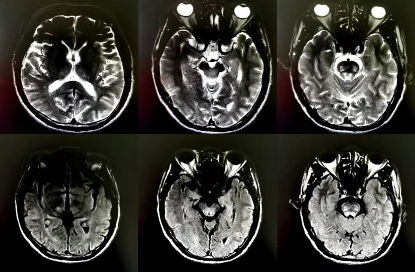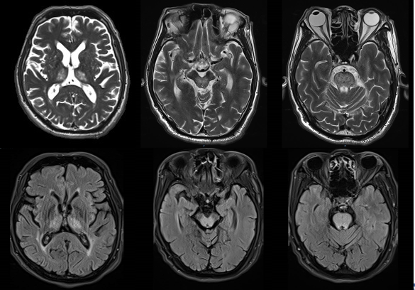Objective: We present a report on a successful case wherein Deep Brain Stimulation (DBS) was employed to alleviate Parkinsonism in a patient suffering from Osmotic Demyelination Syndrome (ODS).
Background: ODS is a rare neurological condition of non-inflammatory demyelination, including central pontine myelinolysis (CPM) and extrapontine myelinolysis (EMP). About two-thirds of ODS patients have a history of chronic alcohol abuse [1]. EMP is accounting for almost half of ODS cases [2]. There’s been an increase in reports of movement disorders related to ODS, such as Parkinsonism, tremors, dystonia, and chorea[3], and DBS stands out as an important option for cases where medication doesn’t work well.
Method: A 66-year-old male patient started to experience tremors and bradykinesia 13 years ago. He took medications such as Arotinolol, levodopa/benserazide, pramipexole, and benzhexol with only slight symptom relief. He had been a heavy drinker for over 40 years, typically consuming strong spirits at an average of 250-500 grams per day. An MRI scan 12 years ago from another hospital showed symmetrical areas of increased T2 signal in the pons, midbrain, and bilateral thalamus (Figure 1). A repeat MRI after hospitalization showed the lesion area remained largely unchanged, but its size had increased (Figure 2). The patient was diagnosed with ODS involving both pontine and extrapontine. After the levodopa challenge test, the patient’s motor symptoms improved by 39.1% (med off 46, med on 28, MDS-UPDRS-III). Tremor symptoms improved by 20%, mostly in resting tremors. Action and postural tremors, which affected the patient’s quality of life the most, did not improve. In November 2023, the patient had DBS surgery targeting the bilateral Posterior Subthalamic Area (PSA) to avoid affected areas by ODS and better control tremor symptoms.
Results: After surgery, the patient noticed an improvement due to the lesional effect and marked improvement after initial programming. DBS parameters were set at voltage 2.9V, pulse width 90 μs, and frequency 130 Hz. This led to a significant reduction in limb tremors. The movement symptom score improved by 34.8%/46.4% (med off 46 to 30, med on 28 to 15, MDS-UPDRS-III), with tremor symptoms showing remarkable improvement of 70%/85% (med off 20 to 6, med on 14 to 2, MDS-UPDRS-III).
Conclusion: PSA-DBS can significantly improve tremors in patients with ODS-related Parkinsonism.
Figure 1
Figure 2
References: [1]. Ambati R, Kho LK, Prentice D, Thompson A. Osmotic demyelination syndrome: novel risk factors and proposed pathophysiology. Intern Med J. 2023;53(7):1154-62.
[2]. Aegisdottir H, Cooray C, Wirdefeldt K, Piehl F, Sveinsson O. Incidence of osmotic demyelination syndrome in Sweden: A nationwide study. Acta Neurol Scand. 2019;140(5):342-9.
[3]. de Souza A. Movement disorders and the osmotic demyelination syndrome. Parkinsonism Relat Disord. 2013;19(8):709-16.
To cite this abstract in AMA style:
T. Zhang, JC. Wu, HT. Li, Q. Wang, C. Zhang, Y. Yu, W. Yue, SQ. Liang. Deep Brain Stimulation (DBS) Improves Parkinsonism Caused by Osmotic Demyelination Syndrome (ODS) [abstract]. Mov Disord. 2024; 39 (suppl 1). https://www.mdsabstracts.org/abstract/deep-brain-stimulation-dbs-improves-parkinsonism-caused-by-osmotic-demyelination-syndrome-ods/. Accessed December 30, 2025.« Back to 2024 International Congress
MDS Abstracts - https://www.mdsabstracts.org/abstract/deep-brain-stimulation-dbs-improves-parkinsonism-caused-by-osmotic-demyelination-syndrome-ods/


